Archive for October, 2021
ICE to EV Conversions
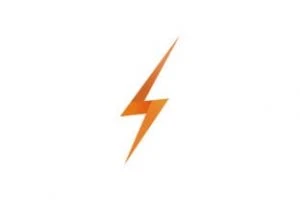
Converting your favourite drive over to electricity seems like a reasonable alternative to buying a brand new EV with a massive price ticket now, doesn’t it? Flicking through the list of brand new EVs that you can currently buy in Australia soon has you eyeing up figures of well over $50 k. At the moment, the cheapest EV in Australia is the MG ZS EV with its $45k price tag. A bog standard Nissan LEAF comes with a drive away price of around $54k. How about a Tesla? Anywhere from $65–93k will get you into a Model 3. Converting an older classic car to full battery-electric power has coolness written all over it. The end result might even gain you a Greta Thunberg award!
Is it possible? Can we convert a favourite oil burner to electric power? If I was to convert my drive to EV, it would have to be a conversion of a favourite car – something like an old Falcon or Commodore. Bringing one of these ideal cruisers up to EV spec would be a challenge, but a challenge with great satisfaction. Installing an electric drivetrain into an old vehicle could help keep some classics on the road and out of the scrapyard. Why not take the restoration, recycling and retrofitting to the next level and repower classic cars?
There have already been a few conversions of this sort of thing in certain areas around the globe, usually in someone’s garage late at night, where the candle burns bright and long into the night. Considering performance enhancements alone, a good off-the-shelf electric drive system will almost always be a substantial performance upgrade for an old daily driver. Even some of the muscle car straight six or V8 powerplants are humbled by a rather conventional EV motor with its instant torque availability.
Converting a petrol or diesel car into an electric one means replacing its combustion engine and fuel system with an electric motor coupled with a traction battery. Although the procedure looks relatively straightforward at first glance, it does mean that you do need to apply sound physics and DIY know-how on electrics to get yourself a car that moves in the right direction safely. There is some pretty high voltage happening beneath the skin of your old, converted classic that enables it to whistle up to 100 km/h in seven seconds, or less. Conversions are a substantial cost and do require appropriate re-certification tickets. However, the whole ordeal should cost quite a lot less than a new EV, at least by a few thousand when compared to a Tesla.
Things to work through.
Installing an electric motor into a gas or diesel car’s chassis and platform requires the skill to build up a drive train and axle to get the power from the electric motor out onto the road. The old gearbox that was essential to the old internal combustion engine (ICE) design is a useless mechanism for the new electric motor. The old gearbox has to go, and a new drive mechanism has to be designed and implemented.
The weight of the vehicle and the dimensions of the wheels directly impact on the choice of brakes and suspension. Not always but, more often than not, the car with a heavy battery pack will weigh more than the original set up. In order to function safely with the added weight and/or changes in weight distribution, the converted car must have some structural strengthening, brake and suspension upgrades and some modifications done in order to ensure that the changes marry up into a harmonious mode of EV transportation and driving pleasure.
The battery pack isn’t going to be cheap. You’ll easily spend in excess of $10–15k for a lithium-ion battery pack that is able to offer a respectable range over 100 km. Lead-acid batteries, like those used in golf carts, can often be installed, though they typically deliver a rather small operating range on one charge. Lithium cells are smaller and lighter, and can enable longer ranges, but they’re more expensive. How many batteries you’ll require will depend on the vehicle you’ve chosen and the space available in which to have them fitted. The new battery pack, as mentioned above, is very heavy and has to be carefully installed inside the car’s framework in a way that won’t compromise occupant space and safety, as well as ensuring excellent on-road behaviour.
One other small thing to think about is how you will heat or cool the cabin. ICE vehicles used the heat that comes from the engine design, but EVs need to run a different set up.
EV enthusiasts usually favour smaller and lighter vehicles for conversion, though the size of your wallet will also control what you can and can’t afford.
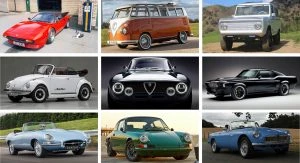
ICE to EV Conversions
Popular choices of cars that have been converted have been cars like the Honda Civic, VW Beetles, the Fiat 124 Spider, the Triumph Spitfire and MGs of the same era, Mazda Miatas or MX-5s, Toyota MR2s, and various Porsches. Pickup trucks and utes are also easy converters because they already have a big tray out the back to accommodate heavy batteries.
Mat Coates from Nelson, NZ, saw the potential of electric cars as a youngster who messed around with remote-controlled vehicles at age 10. His first conversion was a Mitsubishi GTO, so there’s an inspiration for you. How hard can it really be? All things considered, where there’s a will there’s a way. As long as you tick all the boxes and do the job right first time and do it well. A quiet classic that has been converted to EV propulsion is hard to beat and a rather special way of getting around.
A good place to start might also be to talk to the people at https://www.evolutionaustralia.com.au. These people already have experience in converting ICE vehicles over to being an EV.
Why We Need More Information on Vehicle Reliability
Local car manufacturers have long been reluctant to release information about vehicle reliability, just as they were with repair data until developments prompted a change. While those changes were a promising sign for motorists, not much else has changed on the reliability front.
Still, the current standards and practices just aren’t good enough. Your new vehicle is likely to be the second largest individual purchase you’ll make in your lifetime. No one wants to end up with a ‘lemon’, so it follows that manufacturers should be more open when it comes to publishing information about vehicle reliability. That is, if they genuinely value their customers loyalty.

What’s the current situation?
From an owner’s perspective, having full and complete information is invaluable when engaging in a decision making process. It’s necessary in order to filter out options that do not align with our needs. This is something that has been recognised abroad. From the US to the UK and other parts of Europe and Asia, industry surveys with motorists surrounding vehicle reliability are common practice and the results are published for all to see.
In turn, this ensures manufacturers not only receive feedback but are compelled to embrace it – to act upon it and improve their vehicles. Tesla, one of the industry’s most-recent entrants to the motoring space, has been one of the most prominent stakeholders in accepting feedback and it goes some way to explain why their growth has been off the charts as it becomes the most-expensive, publicly-listed car brand in the world.
Tesla is one of the first to admit they have had several notable problems with their ‘high end’ vehicles, however, their approach is all about finding the right solution(s) to improve motorists’ driving experiences.
In Australia, only half the feedback cycle is being undertaken. Motorists are often surveyed for their thoughts on vehicle reliability, but the results are rarely if ever made public.
In fact, it’s hard to know in what way this information is being used given its guarded nature. That being said, it’s widely accepted that mechanical issues have improved some way in recent years – even if we are seeing an abundance of recalls that never seem to stop – but it has generally been the car companies with global reach, under pressure from research in other territories, that are amongst the frontrunners in terms of reliability.

What’s the other side of the equation?
If there is one thing to recognise in defence of manufacturers, the human mechanics of operating a vehicle cannot always be recorded. That is, whether a driver has adequately maintained their vehicle, followed through with appropriate servicing, and ultimately how they drive their car.
Now you’re probably saying these things shouldn’t matter. And they shouldn’t. But for the purpose of a direct comparison between cars and manufacturers, it’s hard to compare the likes of a BMW driven by a P-plater, with a Toyota Camry driven by a retiree.
The other element to consider is that reliability data is only one piece of the puzzle. The type of failure, as well as the cost of repairs, should also be considered. One might expect that ‘luxury’ vehicles encounter fewer reliability issues, however, if each time this vehicle requires repairs that cost three times that of a ‘regular’ sedan, what are the results really demonstrating? Furthermore, with the majority of problems these days encompassing technology problems, can these issues be compared on the same scale as that of vehicles with mechanical problems?
Nonetheless, these points shouldn’t really take away from the point that we need further disclosure around vehicle reliability. The introduction of ‘lemon laws’ in recent time is certainly beneficial, but that’s a reactive response when buyers deserve more up-front information and certainty. In fact, manufacturers owe it to motorists, particularly if they are in search of brand loyalty and a vision to improve future cars.
Hyundai and Hydrogen
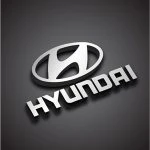
I’m showing my age a bit when I say that I can remember some of the earlier Hyundai cars – the Hyundai Pony and Hyundai Excel come to mind. Back in the 80s and early 90s, Hyundai cars were light, comfortable, and not really up to the same safety standards as the cars that were produced in other parts of the world. Nowadays, however, the story is completely different, and the South Korean automaker often tops crash safety tests with their vehicles, the vehicles are still comfortable, and the style and technology has won many awards. Hyundai has been always improving to the point where they are now a premium brand, very desirable, and leading the world on many fronts. Key new innovations from the Hyundai Motor Company (HMC) team are exciting and are part of Hyundai’s vision for building a cleaner, greener world that includes vehicles that no longer rely on fossil fuels.
Because of the past couple of years, where covid has taken the world’s centre stage, there has been a big shortage of semiconductors in the auto industry, to the point that some auto manufacturers have had to shut down. Semiconductors are used in the manufacture of electronic devices, including diodes, transistors, and integrated circuits. These devices have a wide application in anything electronic, including laptops, computers, appliances, and, of course, the modern automobile.
Like all vehicle manufacturers, HMC has been affected by the shortage and have had to temporarily suspend some of their factories. Despite the shortage, however, along with Toyota and Tesla, Hyundai is among a handful of automakers that actually increased their global sales despite the chip shortage.
However, Hyundai now plans to develop and build its own semiconductors so that they are not so reliant on chipmakers from other corners of the globe. Hyundai wants to make sure it has a steady supply of semiconductors for their projects on-and-into the future by making its own. It will be the parts and service arm for Hyundai, Kia and Genesis who would play a key role in the in-house development. Stockpiling the electronic chips would be important for Hyundai, so that when other global crisis occur, they will then be in a better position to weather the storm. Toyota and Tesla have already had stockpile contingency plans in place for some time, which has ensured that they fared well during covid.
Hyundai and Hydrogen
Hyundai are part of the Hydrogen Heavy Duty Vehicle Industry Group – comprised of hydrogen industry leaders Air Liquide, Hyundai, Nel Hydrogen, Nikola Corporation, Shell and Toyota. This Group has signed agreements with Tatsuno Corporation and Transfer Oil S.p.A. to industrialize globally-standard 70 MPa hydrogen heavy-duty vehicle high-flow (H70HF) fuelling hardware componentry. But, also, in Incheon, which is just west of Seoul, and in Ulsan, production plants will begin producing the hardware in the 2nd half of 2023 with an annual capacity of 100,000 hydrogen fuel cell systems.
South Korea’s influence on core Hydrogen components will see it as the world’s largest fuel cell production capacity, which will also help the HMC to diversify their business and tap into construction machinery and logistics equipment.
EVs might be the big talking point for some, but it is hydrogen that is the dark horse in the clean-green race. These two new fuel cell plants in Korea will accelerate the hydrogen economy and secure broader global market dominance. I reckon that Australia could be a hub for Hydrogen in the Pacific, don’t you think?
Hyundai’s wide-ranging hydrogen revolution accelerates with the showing of their 500 kW Vision FK sports car prototype and the e-Bogie autonomous commercial transport vehicles. HMG recently announced that it will launch next-generation hydrogen fuel-cell power units in 2023 that will double the power output, halve the cost, and reduce package size by 30%, when compared to current systems. Hyundai has a plan to offer “hydrogen for all” by 2040.
Hyundai’s Hydrogen Timeframe
In case you were not already aware, HMG is the parent of Hyundai, Kia and Genesis. By 2028, HMG says it will have applied fuel-cell systems to all of its heavy commercial vehicle models, including large trucks, significantly reducing transport-related CO2 emissions.
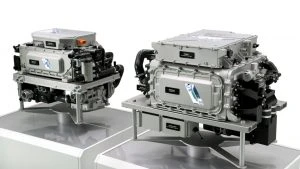
Hydrogen Fuel Cells
By 2030, Fuel-Cell Electric Vehicles (FCEV) will have achieved price parity with Battery Electric Vehicles (BEV), HMG says. And by 2040, HMG expects hydrogen to be available for everyone, for all vehicle types, and globally, triggering a lifestyle revolution.
Models for the Future
The Vision FK sports car is a 500 kW, hydrogen-powered high-performance prototype coupe that is capable of accelerating from 0-100 km/h in less than 4 seconds, while still offering a range of 600 km between top ups. The Vision FK’s fuel cell unit carries N Performance branding, suggesting that it would be a future Hyundai N model rather than a luxury-focused Genesis. HMG’s head of R&D, Albert Biermann, would not be drawn on when the Vision FK would go from prototype to production, but he did confirm that the next-generation Nexo fuel-cell SUV will launch “in the second half of 2023 followed by a Staria” The Staria is a people mover recently launched in Australia. “We are also working, of course, on fuel-cell cars for Kia and Genesis. That will take a little longer time. After 2025 you can expect further fuel cell applications.”
The e-Bogie commercial application is a fuel-cell-powered autonomous trailer that could revolutionise commercial transportation. Biermann also stated, “We are working full throttle on commercial [first] because that is the most effective way to avoid CO2. We are putting a lot of focus on fuel cells, not only for passenger cars but also for commercial vehicles.”
HMG’s Chairman, Euisun Chung, is even more emphatic about the significance of hydrogen fuel cell applications toward a sustainable future. “This may be the last train to a Hydrogen Society, and time is running out. Hydrogen is the most powerful and pragmatic solution to overcoming environmental challenges. Hydrogen mobility will accelerate human progress.”
He went on to say that Australia may have a role to play. “We know Australia is a country with vast and abundant renewable energy. We are exploring business opportunities in Australia with our partners. Our goal is to build a sustainable ecosystem for [a] global hydrogen society.”
He also said that, “We will not immediately phase out internal combustion engines (ICE) commercial vehicles, but we are not starting any new developments of ICE. No new models and no new platforms. Everything will go forward with BEVs and FCEVs.”
Interestingly, according to Hyundai’s head of fuel cell development, Mr Saehoon Kim, FCEV technology has one huge advantage over BEVs: “The main problem with [a] BEV is the scalability of batteries. For a small EV it’s okay, but for commercial large scale [operation] the question immediately is …. How are we going to stack all these batteries with the heavy weight, and who is going to be happy with the low range? So, in this case fuel cell fits perfectly.”
Hyundai’s heavy commercial fuel cell program is already well advanced. In mid-2020, 45 Hyundai Xcient fuel cell trucks began commercial operation in Switzerland. Biermann stated that the trucks covered 210,000 kilometres per month and have saved 130 tonnes of CO2 emissions every month in operation.
The key to Hyundai’s commercial strategy is its third-generation fuel-cell system, which is in the final stages of development. Hyundai expects to launch two units in 2023, one producing 100 kW for passenger vehicles and SUVs (including the next Nexo and Staria FCEVs), and a 200 kW unit for commercial applications. It has been said that by using two fuel-cell systems for trucks Hyundai can provide around 350 kW, which is equivalent to the power of current diesel engines used in trucking logistics.
This is all very exciting news and one that I have welcomed hearing. I’m a fan of the new hydrogen fuel-celled vehicle technology moving forward. This is Hyundai at its best, and we can only continue to watch this space.
Current Hyundai achievements:
The current ICE Hyundai i20 N has been crowned champion of Top Gear’s Speed Week. The 26 fastest cars in the world participated in Top Gear’s Speed Week 2021. It was the Hyundai· i20 N’s sharp handling and everyday usability that stood out to those in the Top Gear team.
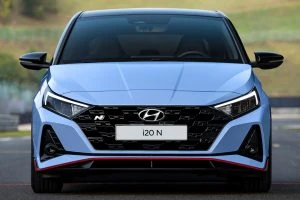
Hyundai i20N
Most Reliable Cars in 2021
How reliable a car is directly correlates with our ownership satisfaction rating, right? So, if we own a car that is always needing something fixed or repaired to make it properly functional, our contentment levels will be lower than if our car was reliable all or at least most of the time. It won’t take long for an unreliable car to start to irk us. Reliability is always a black and white area when it comes to car ownership satisfaction.
What car? has recently published their survey findings for 2021. They questioned more than 16,000 people across the UK who owned a car no older than 5 years old, and this is the results that show which cars and brands are the most reliable, and which ones are not. Is it possible that the more reliable a car is, the more green and sustainable the car is?
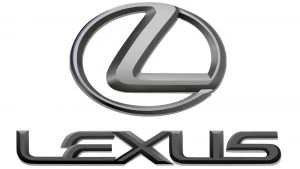
First place goes to Lexus who claims the top spot as the most dependable brand of car you can buy. Lexus cars suffer from very few faults. The Lexus NX SUV is the highest-rated hybrid you can buy.

Second place brand is Dacia, which is considered to be a budget brand. Here is a prime example of reliability and low cost going hand in hand. Dacia’s star performer is the previous generation Dacia Sandero.
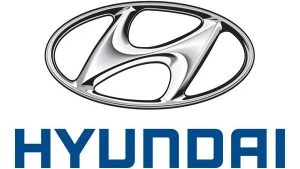
Hyundai takes the bronze, where the previous generation Hyundai i10, the larger i20, and the current Hyundai i30 being standouts. It was revealed that the problem areas included the brakes and gearbox, however the brand’s 5-year unlimited km warranty meant that most problems were fixed for free.
Suzuki
Suzuki takes fourth place for brand reliability; an excellent result. The little Suzuki Swift is the third most reliable car – a star performer for Suzuki.
Mini
Mini cars are generally pretty reliable cars. Mini’s Countryman scored well in the small SUV class. Mini’s little Hatchback is the sixth most reliable small car overall – a great result.
Toyota
Toyota has long been an impressively reliable brand, though it’s slipped slightly from third place last year.
Mitsubishi
Mitsubishi ranked 7th, their place unchanged from last year. The Mitsubishi Eclipse Cross is the most reliable family SUV on the market, boasting a 100% reliability score!
Mazda
Eighth place goes to the Mazda brand. Mazda highlights include the CX-3 (a very reliable small SUV), the CX-5 (petrol version), and the MX-5 sports car.
Kia
Star performers for Kia are the XCeed and Ceed family cars, which are among the most reliable in their class, while the Kia Optima is the second-most reliable executive car. Kia’s affordable E-Niro is the third most reliable EV.
MG
MG is the brand that takes out 10th spot. The classy MG ZS EV is the second-most reliable EV in the survey.
11) Citroen – Citroen’s C3 Aircross is the third most reliable small SUV.
12) Skoda – Skoda’s Superb is the most reliable executive car.
13) BMW – BMW’s previous model 1 Series is the most reliable family car. The BMW 5 Series is the most reliable luxury car. The BMW 3 Series also ranks 3rd in the executive class. Current BMW Hybrids are not quite so reliable.
14) Honda – The previous model Jazz was fifth in its class, while the HR-V is the most reliable small SUV.
15) Tesla – the Tesla Model 3 ranked 5th in the EV class.
16) Renault
17) Seat
18) Audi – Audi’s TT is the number one sports car for reliability.
19) Volvo
20) Volkswagen
Jaguar, Mercedes Benz, Peugeot, Vauxhall, Porsche, Alfa Romeo, Ford, Nissan, Land Rover, and then Fiat takes out 30th spot.
Of the last 10:
Porshce’s Macan took 1st place for the luxury SUV class.
Nissan’s LEAF is 1st for the most reliable EV.